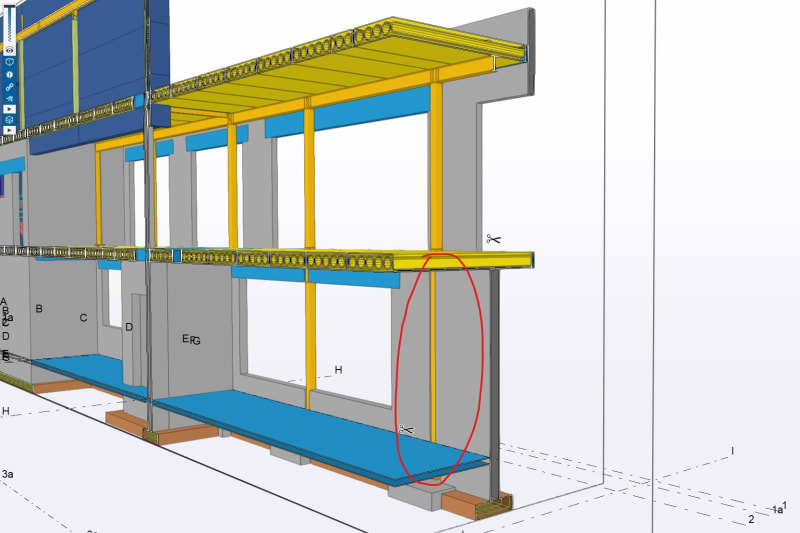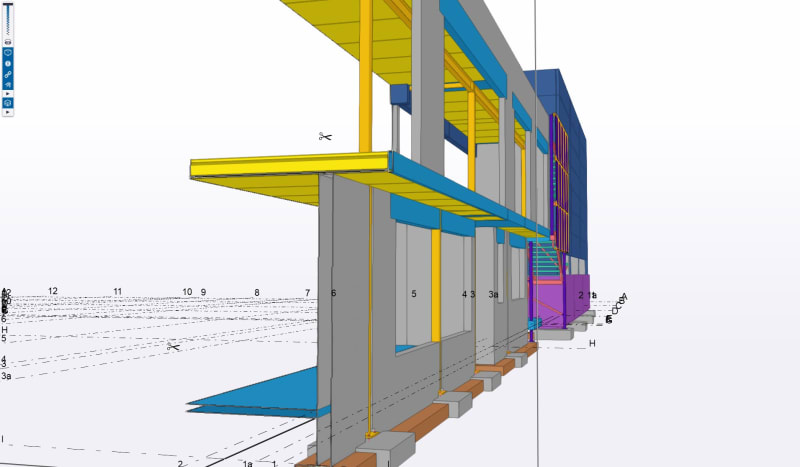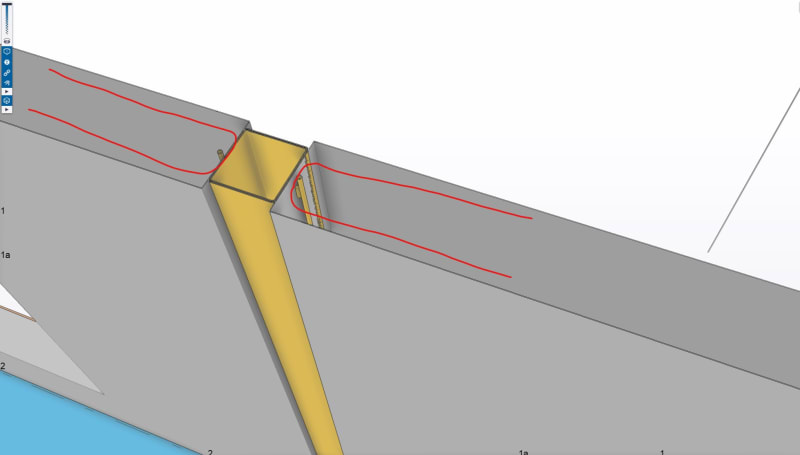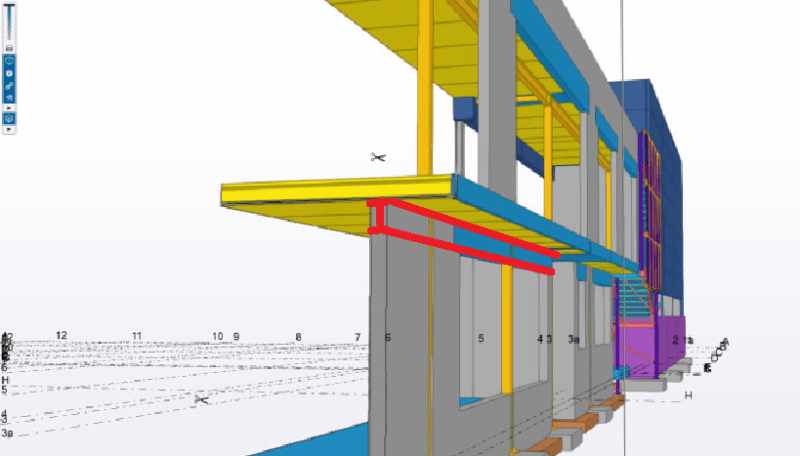nivoo_boss
Structural
Hey everyone!
I have a building where the hollow core slab roof (yellow in the model) is supported on steel beams and columns (orange steel I-beam in the picture) and the columns are situated right on the first floor CMU wall. Since the design loads from the steel columns on the top floor are quite large (200...350 kN) I do not want to support them right on the CMU wall but instead I want to place steel columns in the walls and tie the walls with these CMU walls - the steel columns in the wall would then direct the loads straight to the foundation. The walls are grey in the model. The columns are RHS150x150 sections and the wall thickness is 190 mm. Can this cause some problems with cracks etc in the walls?
Screenshot from my model.

A view from the other side as well. The architect wants the second floor to be sort of a cantilever so I cannot support the roof on the end of the cantilever - the second floor hollow core slabs can't take such load.

And a view from the column and wall joint - I sketched the rebar in red. A U-shaped rebar would be used in every wall joint and it is hooked around a 10 mm vertical rebar that is welded to the colum.

I have a building where the hollow core slab roof (yellow in the model) is supported on steel beams and columns (orange steel I-beam in the picture) and the columns are situated right on the first floor CMU wall. Since the design loads from the steel columns on the top floor are quite large (200...350 kN) I do not want to support them right on the CMU wall but instead I want to place steel columns in the walls and tie the walls with these CMU walls - the steel columns in the wall would then direct the loads straight to the foundation. The walls are grey in the model. The columns are RHS150x150 sections and the wall thickness is 190 mm. Can this cause some problems with cracks etc in the walls?
Screenshot from my model.

A view from the other side as well. The architect wants the second floor to be sort of a cantilever so I cannot support the roof on the end of the cantilever - the second floor hollow core slabs can't take such load.

And a view from the column and wall joint - I sketched the rebar in red. A U-shaped rebar would be used in every wall joint and it is hooked around a 10 mm vertical rebar that is welded to the colum.


